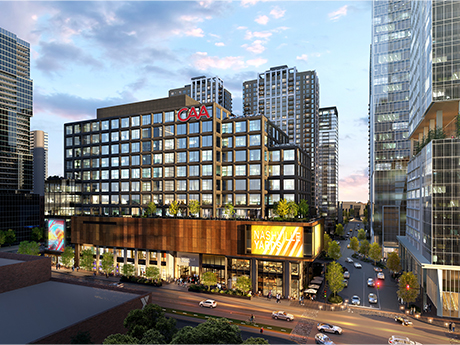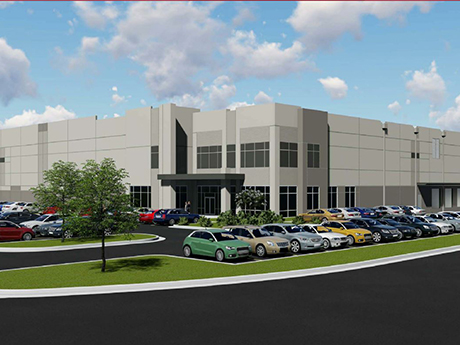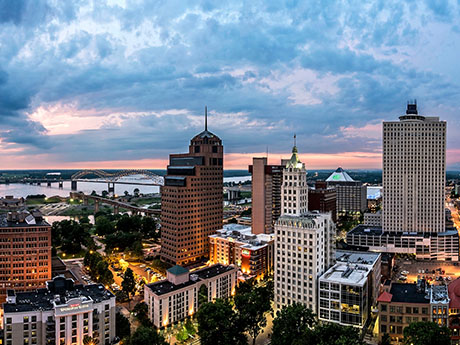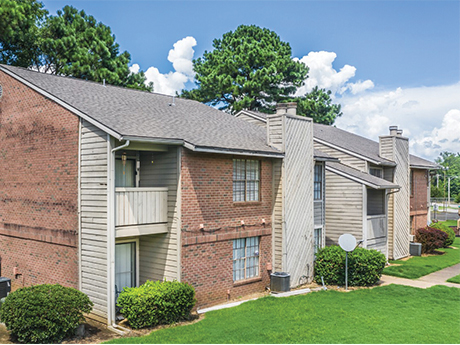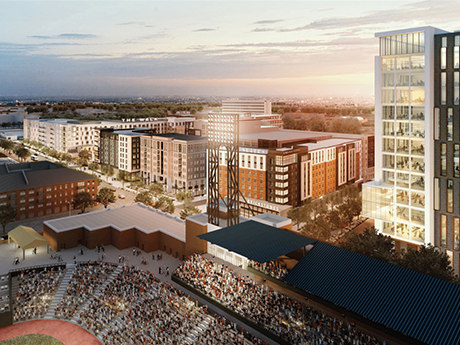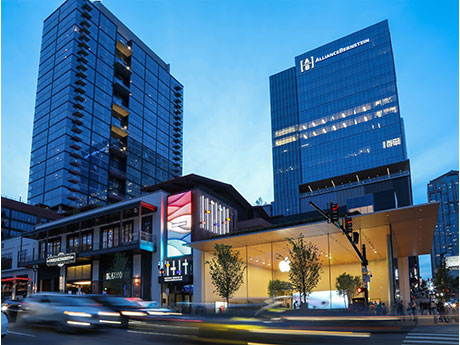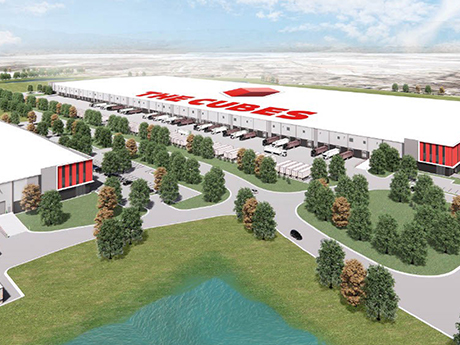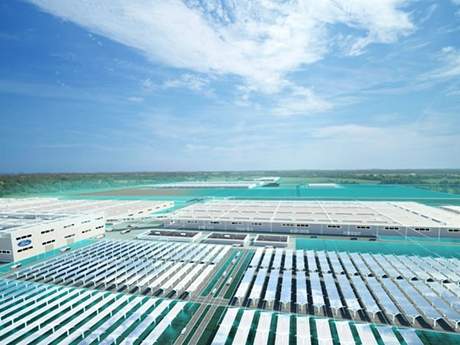By Stewart Lyman and Robby Davis of Stream Realty Partners Contrary to popular belief, the office market is not dying, particularly not in Nashville. While the market is facing headwinds from the interest rate environment and general economic uncertainty, Nashville has shown resiliency, bolstered by the city’s strong population growth, low unemployment rates, and a vibrant, diverse job market. However, while flight-to-quality has been experienced well before the COVID-19 pandemic, the positive performance of top-tier buildings compared to the rest of the market has accelerated coming out of COVID-19. In 2023, Class A Tier I buildings posted 1.17 million square feet of positive absorption compared to negative absorption of 141,900 square feet and negative 32,267 square feet in Class A Tier II and Class B assets, respectively. Top-tier buildings signed some of Nashville’s largest leases in the past year, such as Creative Artists Agency (CAA) for 75,000 square feet at Nashville Yards, Designed Conveyor Systems for 47,000 square feet at McEwen Northside and JE Dunn for 41,000 square feet at Neuhoff. In the urban core, two of the most high-profile new developments are Neuhoff (Germantown) and Nashville Yards (Downtown), both of which are elevating the tenant experience by delivering best-in-class …
Market Reports
In January of 2023, the Memphis industrial market was coming off multiple years of record-breaking growth. However, mid-year we seem to be trending back to a somewhat normal growth pattern. The Memphis industrial market, which was fueled by the pandemic like many other markets, is finally beginning to normalize. Economic factors also influence the market as well. First and foremost is the uncertainty: uncertainty in interest rates, uncertainty in construction costs and uncertainty in when will we see some signs of stabilization. Many say we need to survive until 2025. Yet, the Memphis industrial market seems to have all the tools to handle this moment, and move forward. Memphis, located on the borders of Tennessee, Arkansas and Mississippi, is known as “America’s Distribution Center” — boasting unparalleled expertise in distribution and logistics. With a central location, Memphis’ transportation infrastructure comprises the four Rs: runway, rail, river and road. Memphis International Airport houses the largest cargo airport in the world with the FedEx worldwide hub. Memphis is one of only three cities in the country that has five of the seven Class I railroads: Union Pacific/Southern Pacific, Burlington Northern Santa Fe (BNSF), CSX Corporation, Norfolk Southern and Canadian National Railroad (CN). …
The Memphis office market posted 271,828 square feet of positive absorption in 2022, and that momentum has carried into the first half of 2023. Like most markets, Class A properties accounted for the majority of positive absorption, at 218,851 square feet. This trend has already carried into 2023, as Class A properties lead net absorption totals to begin the year. As a result of a strong year, the vacancy rate has fallen to 12.4 percent market-wide, an 840-basis-point decrease from the height of the pandemic. Additionally, sublease availabilities are less prevalent in Memphis than other comparable office markets. Currently there is 257,681 square feet of sublease space available in the Memphis market, which has a total net rentable area of 21.7 million square feet. The average among similarly sized Southeast markets is 422,624 square feet. There haven’t been substantial space additions to outweigh the below-average leasing activity thus far in 2023. The Memphis unemployment rate continues to trend downward to 3.2 percent in April, slightly lower than Tennessee’s 3.3 percent unemployment rate and the national rate of 3.7 percent. The tight labor market has increased demand in East Memphis, as tenants demand high-quality, highly amenitized buildings to attract and retain …
It’s no secret: The multifamily real estate market in Memphis has experienced a significant decline in investment sales volume and total transactions over the past year. But with signs of life coming quickly on the horizon, how can you be ready to capitalize? According to CoStar Analytics, the 58.7 percent sales volume decline in Memphis is in line with the national average, but we have seen a larger dip in total transactions. The steep and rapid decline is directly correlated to the Federal Reserve’s ongoing battle of taming inflation. The Fed has increased the benchmark federal funds rate at 10 consecutive meetings. And while there was a pause at the June meeting, more rate hikes are expected this year. What does this mean for investors and operators? The cream will rise to the top. Some investors may default on loans due to floating-rate debt and the rapid rate increases, while others may struggle to refinance or sell without incurring losses as their cheaper rate caps expire. However, those that have executed their business plans effectively and added value to their apartment complexes by raising rents can expect some cushion. Another interesting factor to examine is the vacancy rate, which has …
The term “grit” has become synonymous with Memphis. The commercial real estate landscape continues to receive headwinds from interest rates, high inflation, construction prices and geopolitical tensions, but Memphis continues to show grit in the face of these obstacles. Memphis presents a compelling opportunity for retailers seeking expansion. With a low vacancy rate of just 3.5 percent and strong occupancy levels, the city’s retail market is flourishing. The annual rent growth of 3.7 percent aligns with the national average, indicating a stable and promising environment for businesses. Moreover, Memphis offers competitive pricing for retail spaces, with affordable rates and attractive cap rates that surpass those of neighboring markets. This appealing pricing structure, coupled with a surge in transaction activity, has revitalized the market, providing increased liquidity and investment opportunities. The Regional Megasite of West Tennessee is witnessing a remarkable undertaking from Ford Motor Co. in its newly forged partnership with South Korean battery company SK Innovation. The ambitious Blue Oval City project is well underway. Currently valued at $5.6 billion and sprawling across 3,600 acres, the project is expected to generate nearly 6,000 job opportunities with another 30,000 ancillary jobs in the surrounding communities. Anticipated spillover effects from this venture …
As someone who has lived here for the past decade, I regularly hear phrases like, “It’s an exciting time to live, work and play in Nashville.” I love hearing those comments and am honored that our team plays a role in the city’s growth. However, is that optimism cooling, or is Nashville uniquely primed for continued success in the multifamily space? Following a white-hot streak of rent growth and transaction velocity during the economy’s resounding pandemic recovery, Nashville joins the rest of the nation in a transitionary period influenced by interest rate hikes and inflation. But for many reasons, our city is better prepared than most. Approximately 130,000 residents have moved to Nashville in the past five years, resulting in some of the highest apartment construction rates in the country. In fact, according to Marcus & Millichap’s Research Services division, Nashville is expected to take over the top spot for inventory growth nationwide in 2023, with roughly three-fourths of the metro’s new construction located in Nashville proper. While those numbers are certainly impressive, Marcus & Millichap’s National Multifamily Index, which ranks major markets based on forward-looking economic indicators, places Nashville in only the No. 28 position for 2023. This is …
Nashville’s economy experienced some of the healthiest growth in the nation in 2022, with an annual job growth rate of 5.8 percent, exceeding the U.S. growth rate of 4.1 percent, based on data from Oxford Economics. Nashville also received high marks from the Urban Land Institute and PricewaterhouseCoopers, ranking as the No. 1 Market to Watch in their 2023 Emerging Trends in Real Estate report. The report credited Nashville’s tremendous and sustained population growth, and its economic diversity. Referred to as a “Supernova,” Nashville grew by an average of 5 percent since 2019 — four times faster than the national rate — due to rapid net in-migration. These fundamentals have helped boost the retail market in Nashville over the last several years. Post-pandemic, market-wide retail vacancy decreased to 3.3 percent at the end of 2022, which is two percentage points less than the rate at year-end 2020, but in line with the 15-year record low mark set in 2018. While Nashville’s retail sector took a hit along with others across the nation, it continues to rebound and perform due to a rise in dense communities where developers and owners are being strategic and thoughtful in retail curation. As such, the …
Nashville’s industrial market continues to see strong demand going into 2023. In fact, more than 1.7 million square feet of leasing activity was recorded throughout fourth-quarter 2022, bringing the year-to-date transaction volume just shy of an impressive 8.8 million square feet. Even overall vacancy sat at 3 percent during the final quarter of 2022, and while that was a slight increase compared to the previous quarter, it still was 30 basis points below the national vacancy average. Despite a recessionary environment and uncertainty of what’s next in the commercial real estate sector, Nashville’s industrial market is uniquely positioned for the upcoming year. As Nashville’s industrial market still experiences growth, there are several macro-economic trends impacting it that are worth keeping an eye on, such as e-commerce and third-party logistics demand. Interest rates have also risen, making it very tricky to value property and cap rates due to the debt markets. This has triggered limited investment activity from buyers and sellers alike across all property types, including industrial. Industrial developers are also being more cautious as rising interest rates have increased construction costs. Many developers and investors have purchased land or have land under contract, for example, but are waiting for …
Tennessee’s Appeal Process Allows Nashville Taxpayers to Challenge Assessments for New Construction
by John Nelson
Over the past decade, Nashville has enjoyed a baffling explosion of growth that sent cranes shooting up all over the city, festooned with developer names like Bell, Clark and Giarratana. Highrise towers of glass and steel rose out of the old rail yards like the emerging monolith in the opening scene of “2001: A Space Odyssey” multiplied in a funhouse mirror. The Metropolitan Government is eager to add new projects to its tax rolls, and its Assessor of Property decides when and how that happens. The assumptions made by the assessor’s office about a project’s cost and timing dictate how quickly and how much a new building is taxed. So, as always, taxpayers need to keep an eye on what the assessor is doing. The assessor’s difficult job has become even more complicated in the post-COVID quagmire of supply chain failures. Twelve-month projects have stretched into 24-month projects, and the assessor’s assumptions about completion times have been thrown out of whack. To make matters worse, Tennessee’s property tax statutes were not designed to give relief for construction delays or lengthy projects, and now the clock is ticking. Assessing new construction The last Davidson County reappraisal was in 2021, and the …
Inflation is here. Is the Memphis multifamily market built to withstand it? Coming off an unprecedented year of sales volume in 2021, Memphis multifamily assets continue to be in high demand despite rising interest rates. While year-over-year sales volume might be down, the average market sale price per unit increased by 10 percent to $90,700 over the same period, as of second-quarter 2022. While overall market rent per unit growth is off double-digit highs from 2021, it is still up a sturdy 8 percent year-over-year. Strong occupancy levels, low concession rates and limited on-market supply is keeping pricing buoyant, leading to steady cap rates in the face of rising debt cost — at least for now. Capital investment and renovation to existing multifamily properties contributed greatly to both rent growth and sales volume in 2021. Memphis is a very appealing option for investors seeking value, as over 50 percent of all transactions in 2021 fell within the $40,000 to $80,000 per unit range, which is much more competitive than many primary markets. With over two-thirds of existing inventory built before 2000, the vintage of current inventory provides ample opportunities to reposition assets. Local government entities have actively played a role …


